On a visit to the George family in Cincinnati we discovered the American Sign Museum, surrounded by neon, porcelain and paper signs and full of American memorabilia. If you think it is a trivial museum, you are missing the signs of the times, the visual artifacts of our culture.
Victoria, Jason (grandson), and I saw the signs of the times yesterday all condensed in a small 3-4 room museum. There was an historical video of sign media and improvements and a neon sign-making workshop where you could see through a window the tubes of plastic evolving into neon letters like the Howard Johnson’s sign below. If you have time to open a video, here’s an animated version of the same sign: Ho Jo’s Sign
Did you ever wonder about the story behind the boy reaching toward the baker in the Howard Johnson’s logo? It’s “Simple Simon,” better represented in the porcelain model below.
Simple Simon met a pieman going to the fair.
Said Simple Simon to the pieman, “Let me taste your wares.”
Said the man to Simple Simon, “Show me first your penny
Said Simple Simon to the pieman, “Sir I have not any.”
Nowadays we are more sensitive to ridiculing stories like “Simple Simon,” so it is probably good that the nursery rhyme was not associated with Ho Jo ice cream. All we see is a boy begging for a scoop of 28 flavors.
This is a good example of how signs evolve from nursery rhymes to twenty-eight flavors in brilliant neon. The static sign became a multi-colored neon before neon became less common in recent days. The first Ho Jo’s was in Utica, NY. Somewhere in upstate New York the sole remaining Ho Jo’s sign lingers as an unused artifact.
Jason was struck by the sign of Queen City Sausage, so I captured his head under the sign. We think that Cincinnati’s identity as the “Queen City” was based on a riverboat that ruled the Ohio River in the days of river travel.
The iconic “Big Boy” also has an evolution from this display of the red-headed boy with a slingshot in his back pocket to a dark-haired boy in checkered pants disarmed of his slingshot. Apparently the slingshot had evolved from a boy’s into toy a street weapon, no longer appropriate for selling hamburgers. Likewise the supposed energy and joy of red-heads lost its currency in modern days.
The “Roh’s” sign was lifted in its entirety as a Cincinnati storefront to the museum, when the store closed down. It reminds us of the vanishing local hardware store, with its inventory for every purpose.
A number of the neon sign artifacts were church signs, like this “United Pentecostal Church” example. Once upon a time neon was the best medium to attract the eye and did not seem tacky to the sophisticated personality. I saw a number of neon church signs about the same dimensions as this one.
At the end of our Cincinnati visit with the Georges we had an outstanding Mexican meal at Tahona’s in the Blue Ash Marketplace/Recreation Area. We shared a delicious “Tahona’s Corn” in a cottage cheese base [https://www.tahonakitchen.com/menu].
The iridescent blue viewing tower was the centerpiece of the sprawling premises. We didn’t climb, but the structure made an awe-inspiring presence between the marketplace and the recreation area. Among the recreation activities, a ground-level zip-line hanging seat gives you about a 75-foot ride seated or standing.
The less said, the better, about my attempt to race Jason 15 yards or so down the sidewalk. The legs don’t answer the call the they used to.

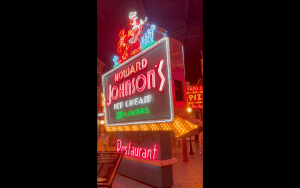
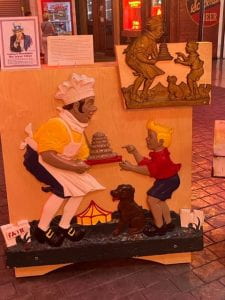
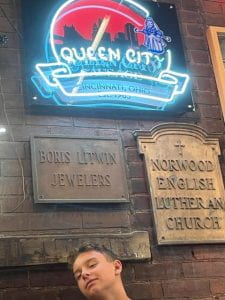
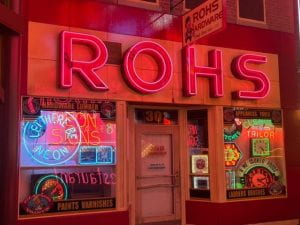
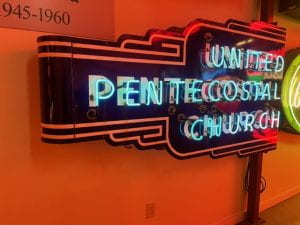

Nicely done, Bill. Your words reminded me very much of my experience with a small museum I had on my recent trip to NYC.
On W 23rd st. nestled in a couple store fronts and basements is the Poster Art Museum. Currently on display were two exhibits. One was of posters for the early Russian silent films and the other was posters for early silent films in the U. S. and England that involved women behind the camera, as producers and directors.
One interesting aspect brought to light for me in the latter exhibit was that although men dominated as directors and producers, women were able to carve out for themselves a significant niche in the early days of the industry. But, somehow, the unionization of the industry contributed to the decline in women’s roles as directors and producers.
I agree with you that a small museum can pack a punch. Thank you for your offering. Bf